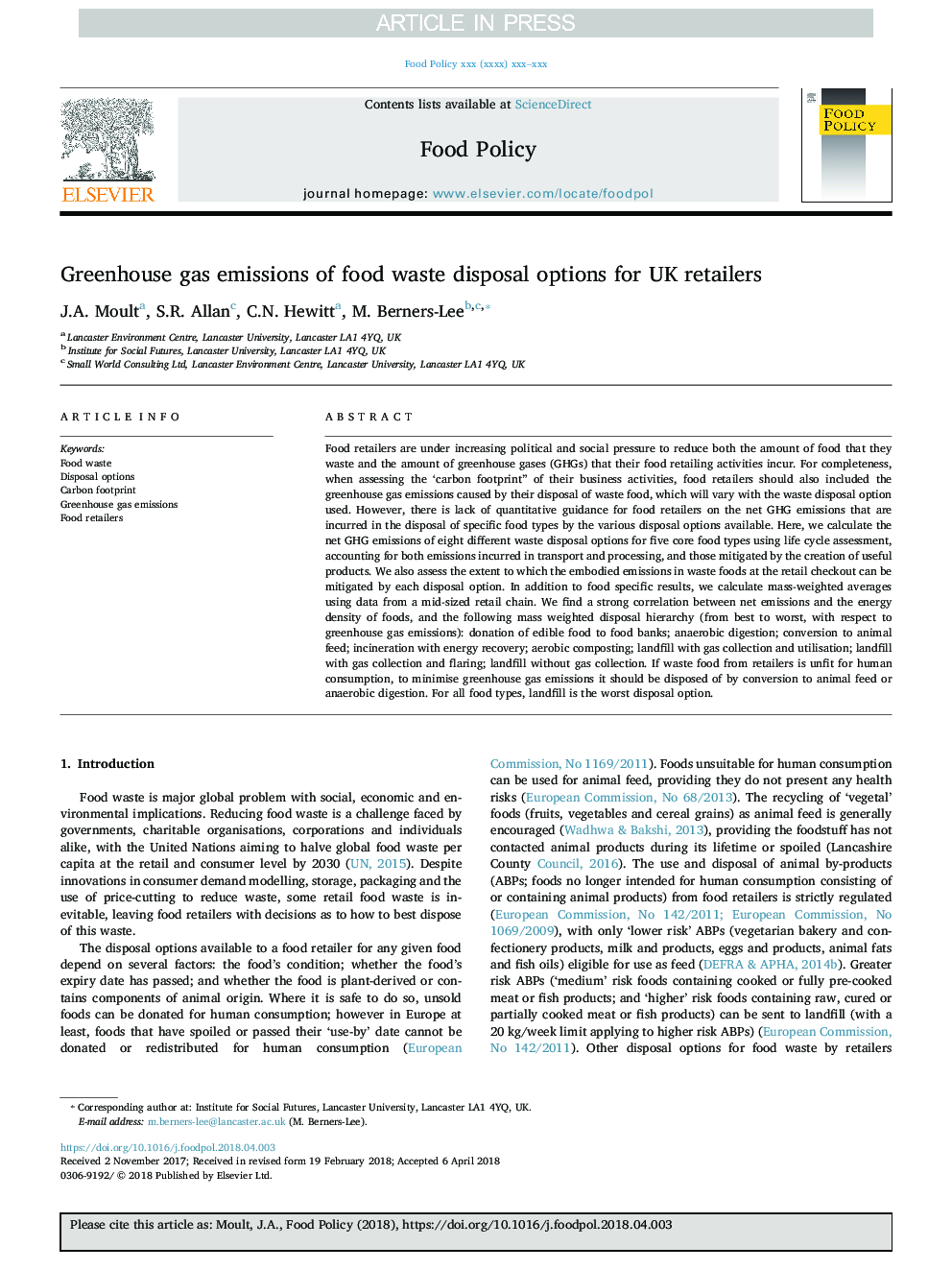| Article ID | Journal | Published Year | Pages | File Type |
|---|---|---|---|---|
| 7352376 | Food Policy | 2018 | 9 Pages |
Abstract
Food retailers are under increasing political and social pressure to reduce both the amount of food that they waste and the amount of greenhouse gases (GHGs) that their food retailing activities incur. For completeness, when assessing the 'carbon footprint” of their business activities, food retailers should also included the greenhouse gas emissions caused by their disposal of waste food, which will vary with the waste disposal option used. However, there is lack of quantitative guidance for food retailers on the net GHG emissions that are incurred in the disposal of specific food types by the various disposal options available. Here, we calculate the net GHG emissions of eight different waste disposal options for five core food types using life cycle assessment, accounting for both emissions incurred in transport and processing, and those mitigated by the creation of useful products. We also assess the extent to which the embodied emissions in waste foods at the retail checkout can be mitigated by each disposal option. In addition to food specific results, we calculate mass-weighted averages using data from a mid-sized retail chain. We find a strong correlation between net emissions and the energy density of foods, and the following mass weighted disposal hierarchy (from best to worst, with respect to greenhouse gas emissions): donation of edible food to food banks; anaerobic digestion; conversion to animal feed; incineration with energy recovery; aerobic composting; landfill with gas collection and utilisation; landfill with gas collection and flaring; landfill without gas collection. If waste food from retailers is unfit for human consumption, to minimise greenhouse gas emissions it should be disposed of by conversion to animal feed or anaerobic digestion. For all food types, landfill is the worst disposal option.
Related Topics
Life Sciences
Agricultural and Biological Sciences
Food Science
Authors
J.A. Moult, S.R. Allan, C.N. Hewitt, M. Berners-Lee,
